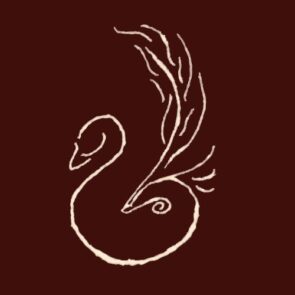Two little yellow creatures. I saw them for the first time when I arrived at the post office that Wednesday morning. The Post Mistress pulled back the lid of their little cardboard box so I could see that they had traveled well.
My sister drove home so I could cradle the box on my lap and listen to their tiny noises. I was bringing home my birthday present – two Sebastopol goslings.
The First Week
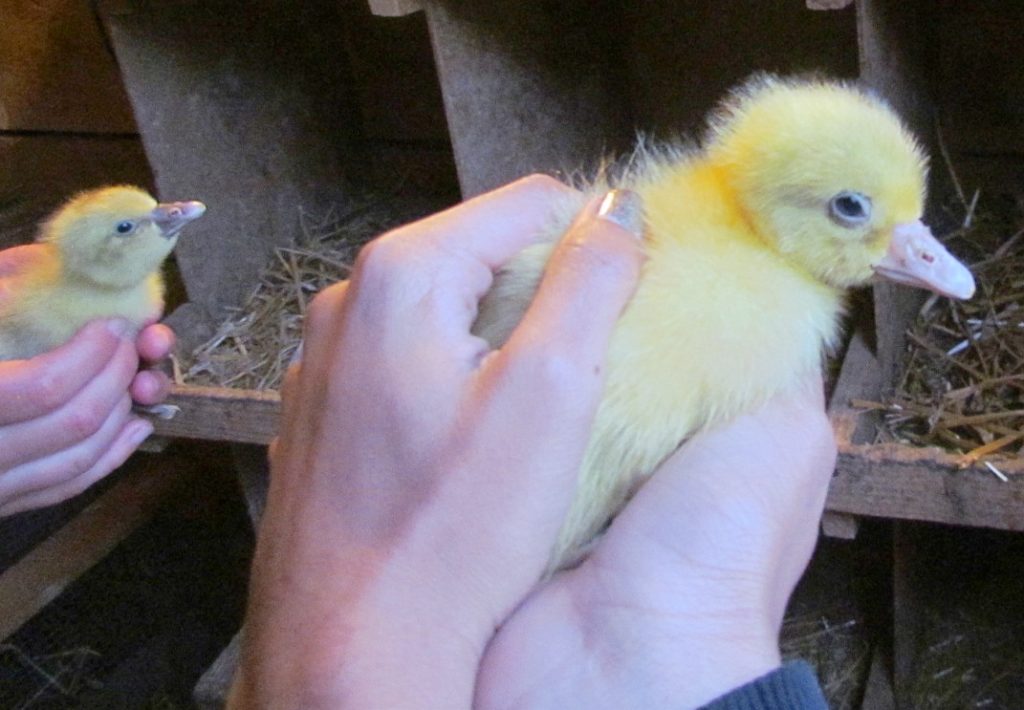
I have to admit that at first I didn’t think they were quite as cute as chicks. But big! They seemed huge after the itty-bitty babies one of our hens had hatched only a month or so before. Their baby fluff felt wiry, but oh, they were so squishy! I fell head-over-heels in love.
That first week, I frantically waited for my goose manual to arrive from Amazon, and I wondered about things like:
“Should I be letting them eat grass yet?”
“When can they have a swim?”
I looked for answers on the internet while I waited, and I honestly don’t remember where I found the answers first.
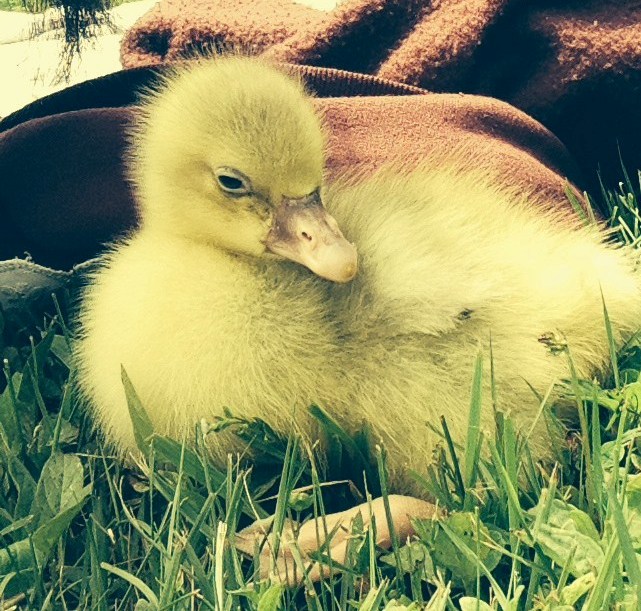
My mom discovered their insatiable love of grass on their second day at home. We began sessions of sitting on a blanket on the lawn and feeding them tiny bits of grass. I used scissors to cut it into baby-sized pieces.
I also made sure to get them some baby-sized grit so their gizzards would be able to grind the roughage. And we let them dunk their faces in a small dish of water. This is important for keeping their eyes healthy.
When my book did arrive, I found something exciting: a picture showing how to sex white Sebastopol goslings by the color of their baby down! The little guys in the photo looked just like Costi and Jena, except – I had named my goslings backward!
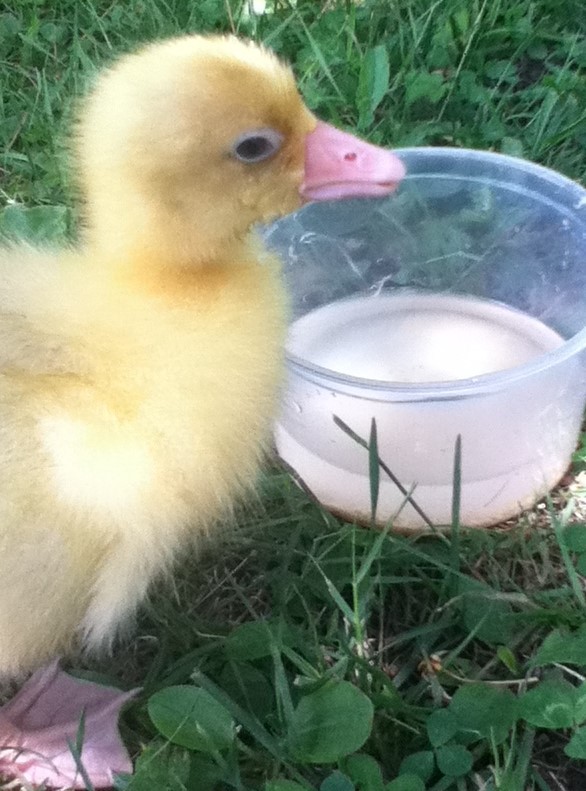
The darker gosling with color on her beak was the girl I wanted to name “Jena” (ZHEH-nah).
The yellower, pink-billed gosling was the male: “Costi” (KOHS-tee).
Growing Like — Well, Like Geese
At about two weeks old, they were allowed to have their first bath on a hot June day. They enjoyed it, of course. And it wasn’t long before I bought them a kiddie pool! I didn’t let them swim unsupervised until they were big enough to hop in and out of the pool on their own. Young goslings can drown if they can’t get out of the water when they’re ready, because their down isn’t anywhere near as water-resistant as the oiled feathers of an older bird. I also wanted to make sure they didn’t become hypothermic.

Their sweet little noises started to turn into Costi’s “neighing” sounds, and Jena’s grunting and whispering and both of them hissing at anything they found threatening. I’m not sure I’d say they honk, exactly — definitely not like Canada geese. But I was shocked at how many sounds they make!
They feathered out first on the wings and tail, then the underside. Then the rest of them followed.
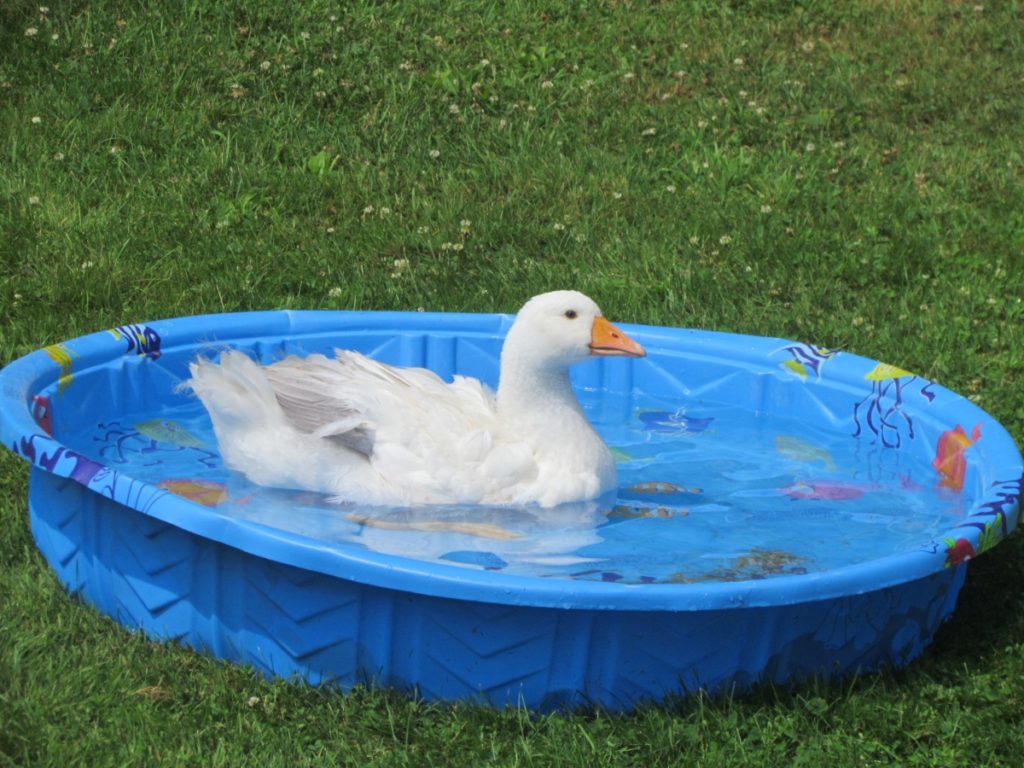
I had raised chickens several times, but I found these little waterfowl to be so very different. They grew crazy fast! And they were skittish of things they hadn’t seen before – like a plastic planter filled with water and some wheat berries in the bottom.
Come on, it’s food!
And it turned out to be impossible for me to work while they free-ranged. They followed me everywhere – even to the other end of the wheelbarrow! As they got older, they began to wander farther away, and I could actually get some work done. But they were so curious – which means they chewed on things – that I didn’t dare let them out of my sight for very long.
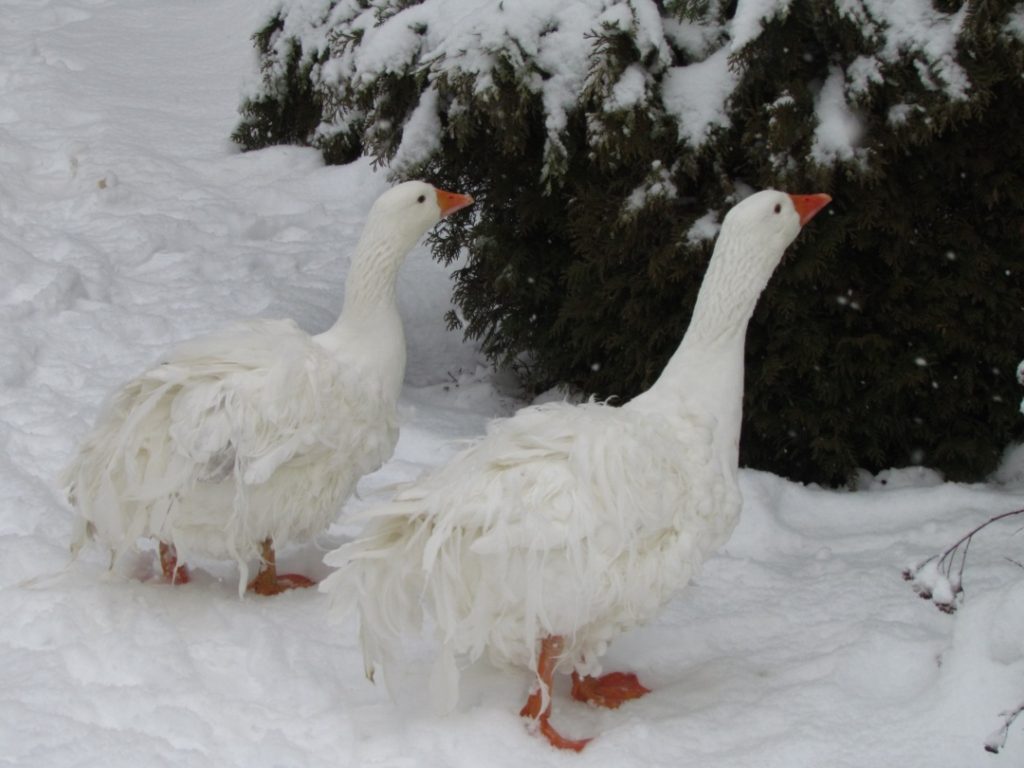
By Christmas, they were gorgeously curly and basically full-sized. Jena kept a fair bit of grey in her plumage that first year, and she kept a tiny “beauty spot” on the side of her head for a few years.
Suggested Resources
I loved raising my goslings, and I was especially excited when Costi and Jena raised an adorable, squishy gosling of their own a few years later! If you’re thinking about trying some geese for the first time, here are a few resources that I have found helpful:
- Keeping Geese by Chris Ashton – I love this book. It covers how to care for geese from hatch to adulthood. It also covers anatomy, the ancestry of geese, all the major domestic breeds and what makes them unique, how to hatch your own goslings, and more. I really appreciate the color photography.
- Geese by David Holderread – Also a wonderful source from a highly respected waterfowl breeder. It is thorough and covers breeds of geese, hatching and rearing goslings, caring for adult geese – including instructions for mixing your own feed, various sicknesses, how to butcher geese, and even some goose recipes.
- You might also enjoy becoming a member of an online forum such as Backyard Chickens, which also has a waterfowl section.
I know there is more out there on raising and keeping geese, although information on these amazing birds seems like somewhat of a rarity in general. If you’ve found something good, please let me know in the comments below!
